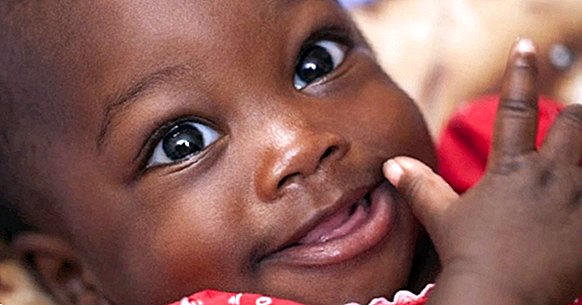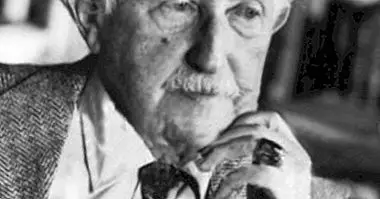The 4 stages of language development
The acquisition of language comprehension and expression skills is a cumulative process that begins with the birth of the baby. As soon as he arrives in the world, the baby begins to hear the phonemes and to identify the verbal structures that he will gradually acquire in order to communicate with those around him and thus cover his needs.
In this article we will describe the stages of language development in young children , from the first undifferentiated vocalizations to the acquisition of the complex components of speech that in the long term will allow the improvement of communication skills.
- Related article: "The 12 types of language (and their characteristics)"
The stages of language development
The main stages of language evolution on the following:
1. The pre-verbal or pre-linguistic period
At the beginning of life, babies emit sounds that are increasingly communicative and close to language. Maternal or maternal speech, characterized by a slower rhythm , frequent repetitions, shorter sentences, grammatical simplification and a clear pronunciation, can be helpful in the progressive development of the linguistic understanding of the child.
The preverbal interactions between the baby and other people are qualified as protoconversaciones because they have a structure similar to that of the dialogues. This antecedent of language is complemented by non-verbal responses such as manual gestures or facial expressions.
Among the prelinguistic signs, the "protos" stand out. The protoimperatives appear around nine months ; The baby points to an object to indicate to another person who wants it. We speak of protodeclarativos, which develop at twelve months, when a similar gesture has the objective of calling the attention of the adult to be fixed on something.
In the first year of life the sounds of babies advance from the first reflex vocalizations, such as growls and cries, to lullabies (consonants, vowels or simple combinations like "gu") and babbling, consisting of the production of syllabic chains ; Initially these are repeated, but later different syllables are combined.
The first words appear approximately at twelve months of life. In this time babies tend to omit and replace phonemes, as well as to approximate the pronunciation of two successive consonants to facilitate it; This is known as "assimilation".
2. The holofrásico period
The term "holofrase" is used to talk about the phrases consisting of a single word , which are characteristic of the second stage of language development. During the holophrasic period the words fulfill functions that will later correspond to the sentences.
The meaning of the holofrases depends to a great extent on the context in which they are pronounced and of non-verbal language. So, if a baby says "bibe" he is probably asking for a bottle, but if he says so, he may want to say "This is a bottle," for example.
The holofrase will be the nucleus of linguistic development: despite the lack of grammaticality of these constructions, its appearance indicates that the baby understands that verbalizations have as basic objective to transmit a certain meaning to other people.
Babies usually reach the holofrásico period when they have more or less a year. Later your vocabulary will increase rapidly and intensely and little by little they will start to combine different words.
- Maybe you're interested: "Noam Chomsky's theory of language development"
3. The first combinations of words
The holophrasic period ends shortly before two years. At this age the vocabulary of the baby has become much more complex, so that he is already capable of combine words and, therefore, meanings . Thus, subjects and predicates appear explicitly for the first time, although it is still not clear that the child distinguishes between categories of words.
Between the ages of two and three, children begin to combine three or more words in a habitual way, arriving at surprisingly rich sentences. They also learn to use different intonations that allow them to use the interrogative mode, for example.
The first combinations of words they are known as "telegraphic speech" because the little ones obviate the less informative components of the sentences, like the determinants and the conjunctions, giving priority to the verbs and the nouns; the latter constitute the bulk of the words learned during this stage of linguistic explosion.
4. Advanced language development
In the period between approximately 16 months and 4 years, children's vocabulary increases exponentially. When you reach this age his linguistic capacity begins to approach that of adults progressively, although it will take several years until they improve both vocabulary and grammar.
There is a dissociation between understanding and the production of language. In particular, young children are able to understand complex sentences that they can not generate by themselves until more than two months later.
There are two types of errors very frequent during the language acquisition period: Overextensions and underextensions . The first are generalizations consisting in using a word to designate other objects, such as calling all mammals "dog"; the infraextensions or subgeneralizations are errors opposed to these.
As the children grow, different milestones will take place that will be fundamental for the development of adult language. Among others, the identification of irregular forms, the acquisition of verbal modes and the progress of metalinguistic and metacognitive knowledge are of great importance.
- Maybe you're interested: "Aphasias: the main language disorders"



















